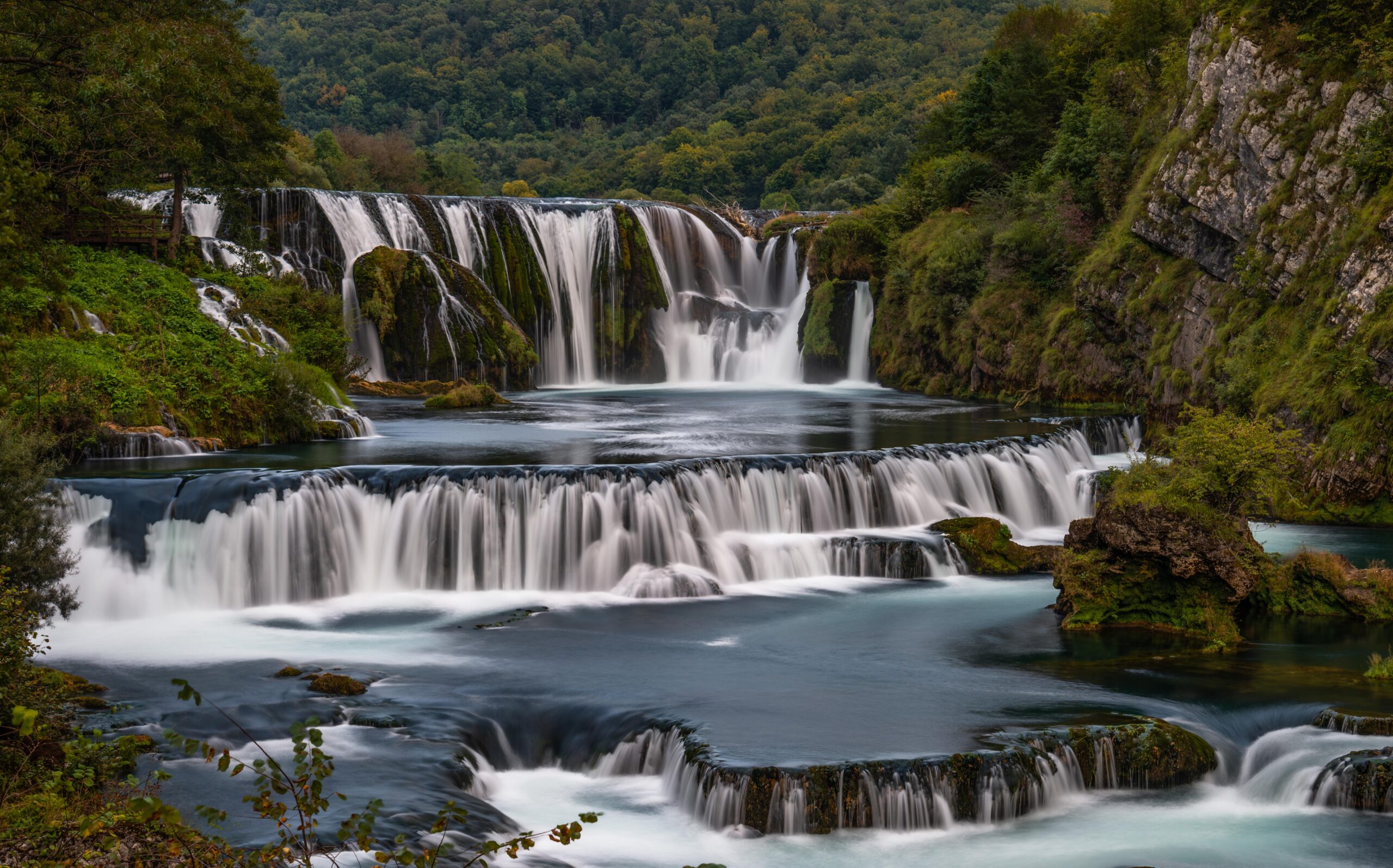




As a photographer born in the city of Bihać, Una has always been one of my main inspirations, both in everyday life and creativity. In my eyes, Bihać as a whole is a national treasure. As one quote reads "Not enough eyes to see, nor lungs to breathe in". This is why I highly recommend everyone to visit this part of Bosnia and Herzegovina.
Una National Park
Una National Park includes the canyon area of the upper course of the river Una upstream from Lohovo, the canyon part of the lower course of the river Unac its confluence with the Una upstream to Drvarsko polje, the area between these two rivers and the orographic slopes of Plješevica, Grmeč and Osječenica. The river Una, as the greatest natural gem after which the Park was named, springs in the village of Donja Suvaja below the Stražbenica mountain in Croatia. The most beauftufl part of this river flows through the town of Bihać.

Štrbački Buk
Štrbacki Buk, 24.5 meters high, is the tallest and most spectacular waterfall in the Una National Park. The origin of the waterfall is linked to the tectonic plates movement and the formation of travertine deposits.
In the 20th century, this area was rich in the Una mills reminiscent of the stilt houses inhabited by the Iapydes. There are 3 different routes you can take to visit Štrbački Buk - near Gorjevac, Ćukovo and Orašac. Štrbački Buk is one of the most popular destinations within the city of Bihać and one of the largest natural attractions in Bosnia and Herzegovina.

Martin Brod
The settlement of Martin Brod is located around 50 kilometres from the city of Bihać, at the exit of two different canyons, a place where the Unac tributary flows into Una. After Štrbački Buk, Milančev Buk is one of the most beautiful waterfalls in Bosnia and Herzegovina and it is 54 meters high. The place is known for the grain mills on the Una River, which operated around 20 flour-producing mills at one moment. Today, there is only a small number of mills still functioning. You've probably heard of the well known Orthodox monastery Rmanj, which dates back from the 15th century. What makes its monastery special is the material from which it was made - travertine deposits. The monastery was built in 1443 and is dedicated to St. Nicholas of Myra.

Legend of Martin Brod - according to this legend, one girl named Marta fell in love with a boy who had curly hair and sooty face. He lived on the other side of the bank of the river Una. Martina's parents were strictly against their love, but the love was stronger and one late evening in the wee hours Marta decided to cross to the other side of the river. With her skirt lifted, she hurried to a boat, ready to see her lover, but she slipped on the travertine and drowned in the Una River. Her blonde lingered on the surface of the river for a moment, and that's how Martin Brod came to life.
Lohovo
At this locality, take a light walk through a forest and visit 2 amazing waterfalls. A part of the Una railway stretches through here.

Stari Grad Ostrovica
Old town Ostrovica is located in Kulen Vakuf, around 40 kilometres away from the city of Bihać. Ostrovica as a town has 3 very important historical aspects. The first medieval aspect of Ostrovica is presented in a form of preserved rampart remains from the 15th century. The medieval town of Ostrovica was located in the parish of Lapac, and belonged to the Karlović family, while in the Middle Ages it was the most fortified town in the upper reaches of the Una River. In December 1523 the city fell and was ruled by the Ottomans until 1878. The Ottomans kept their crew here and abandoned the town in 1878. In 1699, we first get to hear about a captaincy that belonged to the Kulenović family, called Haračlije. The captains remained in Stara Ostrovica until after 1791. Their noble court was located at the main entrance of the town. After the loss of Lapac and the relocation of the border in the immediate vicinity of Stara Ostrovica, the captain moved his headquarters to Prkose.

Srednjovjekovni grad Orašac
Located around 30 kilometres away from the city of Bihać, is the city of Orašac - a medieval town that belonged to the Hum parish. With the arrival of the Ottomans, the city became part of the Ostrovica captaincy. Most of the city and mosques, which were within the city walls at that time, were built during the Turkish rule, while today only ruins remain.
